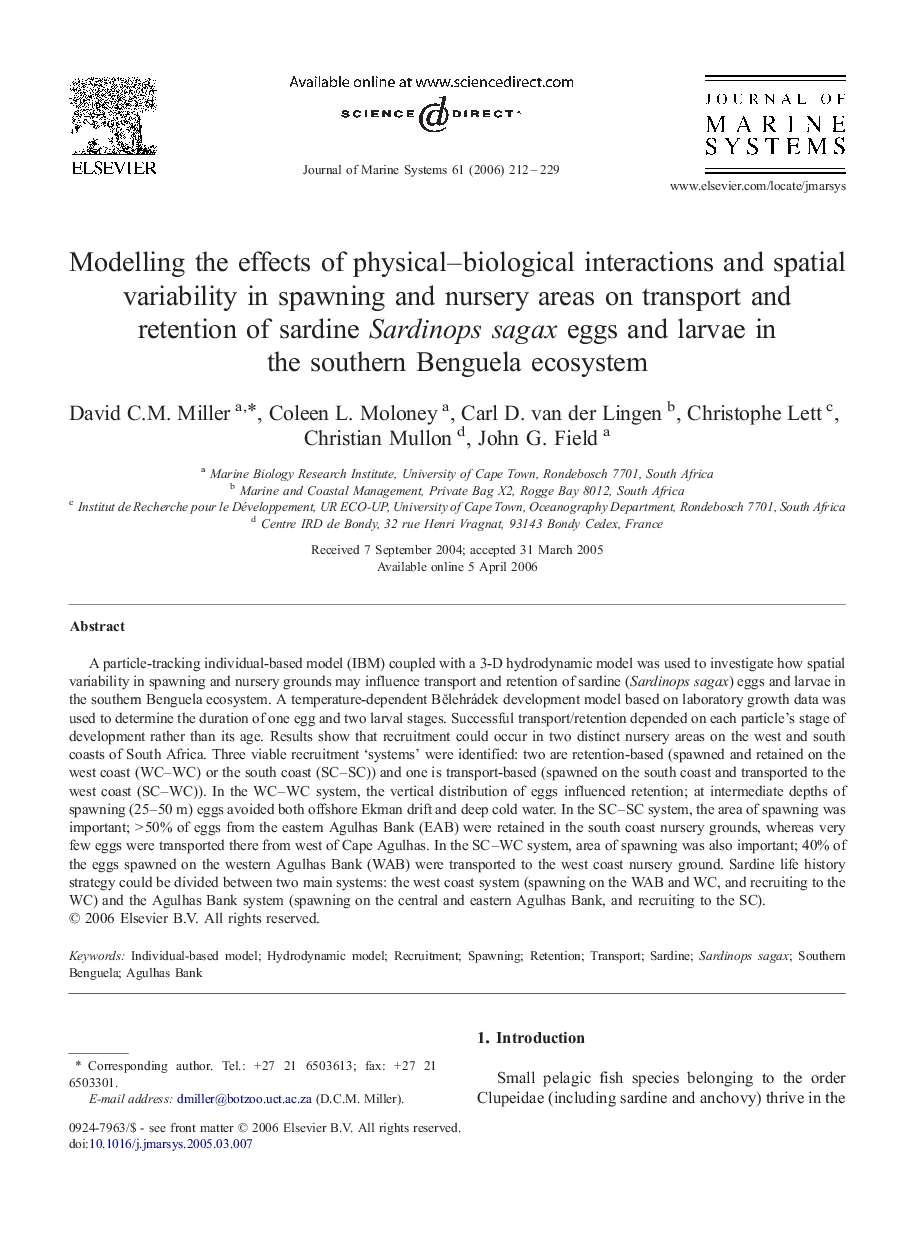| Article ID | Journal | Published Year | Pages | File Type |
|---|---|---|---|---|
| 4549322 | Journal of Marine Systems | 2006 | 18 Pages |
A particle-tracking individual-based model (IBM) coupled with a 3-D hydrodynamic model was used to investigate how spatial variability in spawning and nursery grounds may influence transport and retention of sardine (Sardinops sagax) eggs and larvae in the southern Benguela ecosystem. A temperature-dependent Bělehrádek development model based on laboratory growth data was used to determine the duration of one egg and two larval stages. Successful transport/retention depended on each particle's stage of development rather than its age. Results show that recruitment could occur in two distinct nursery areas on the west and south coasts of South Africa. Three viable recruitment ‘systems’ were identified: two are retention-based (spawned and retained on the west coast (WC–WC) or the south coast (SC–SC)) and one is transport-based (spawned on the south coast and transported to the west coast (SC–WC)). In the WC–WC system, the vertical distribution of eggs influenced retention; at intermediate depths of spawning (25–50 m) eggs avoided both offshore Ekman drift and deep cold water. In the SC–SC system, the area of spawning was important; > 50% of eggs from the eastern Agulhas Bank (EAB) were retained in the south coast nursery grounds, whereas very few eggs were transported there from west of Cape Agulhas. In the SC–WC system, area of spawning was also important; 40% of the eggs spawned on the western Agulhas Bank (WAB) were transported to the west coast nursery ground. Sardine life history strategy could be divided between two main systems: the west coast system (spawning on the WAB and WC, and recruiting to the WC) and the Agulhas Bank system (spawning on the central and eastern Agulhas Bank, and recruiting to the SC).
